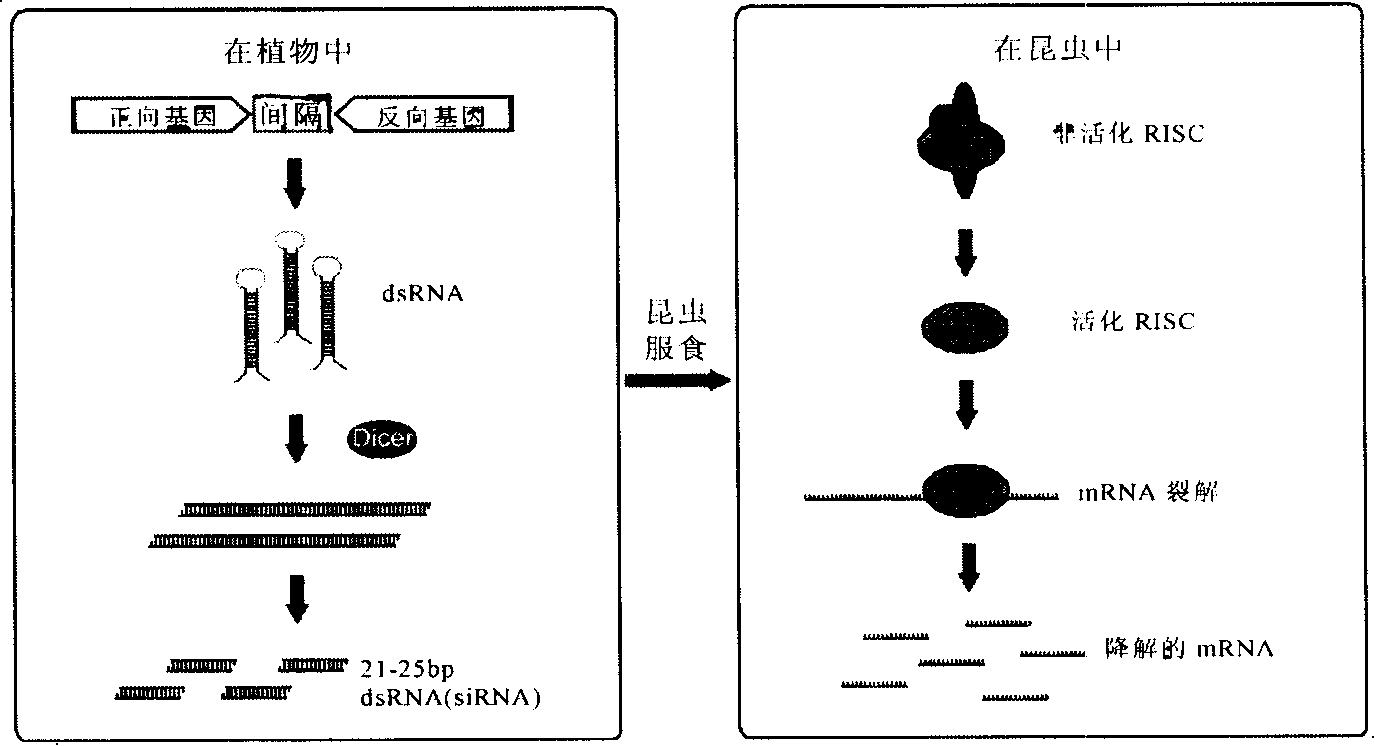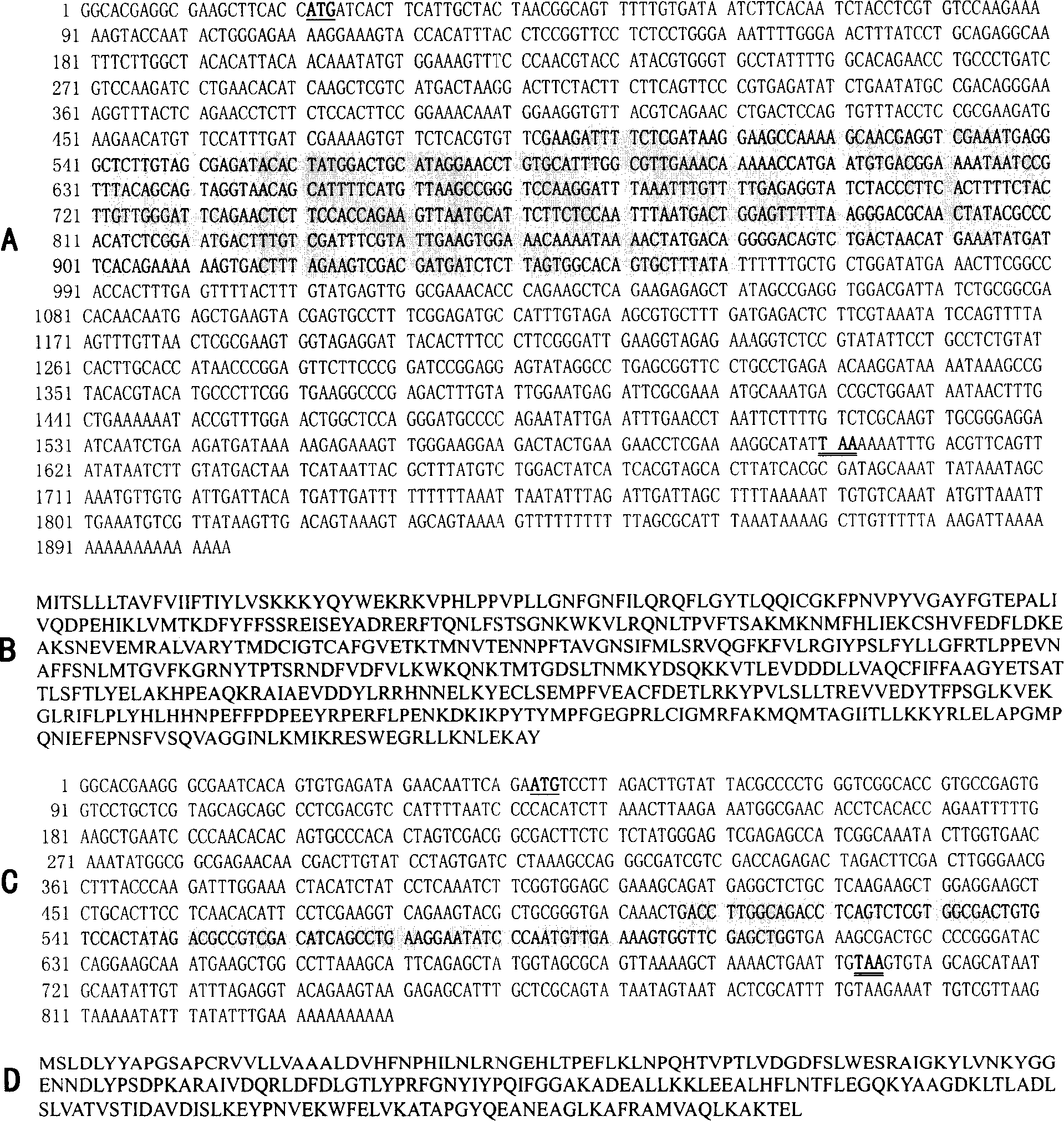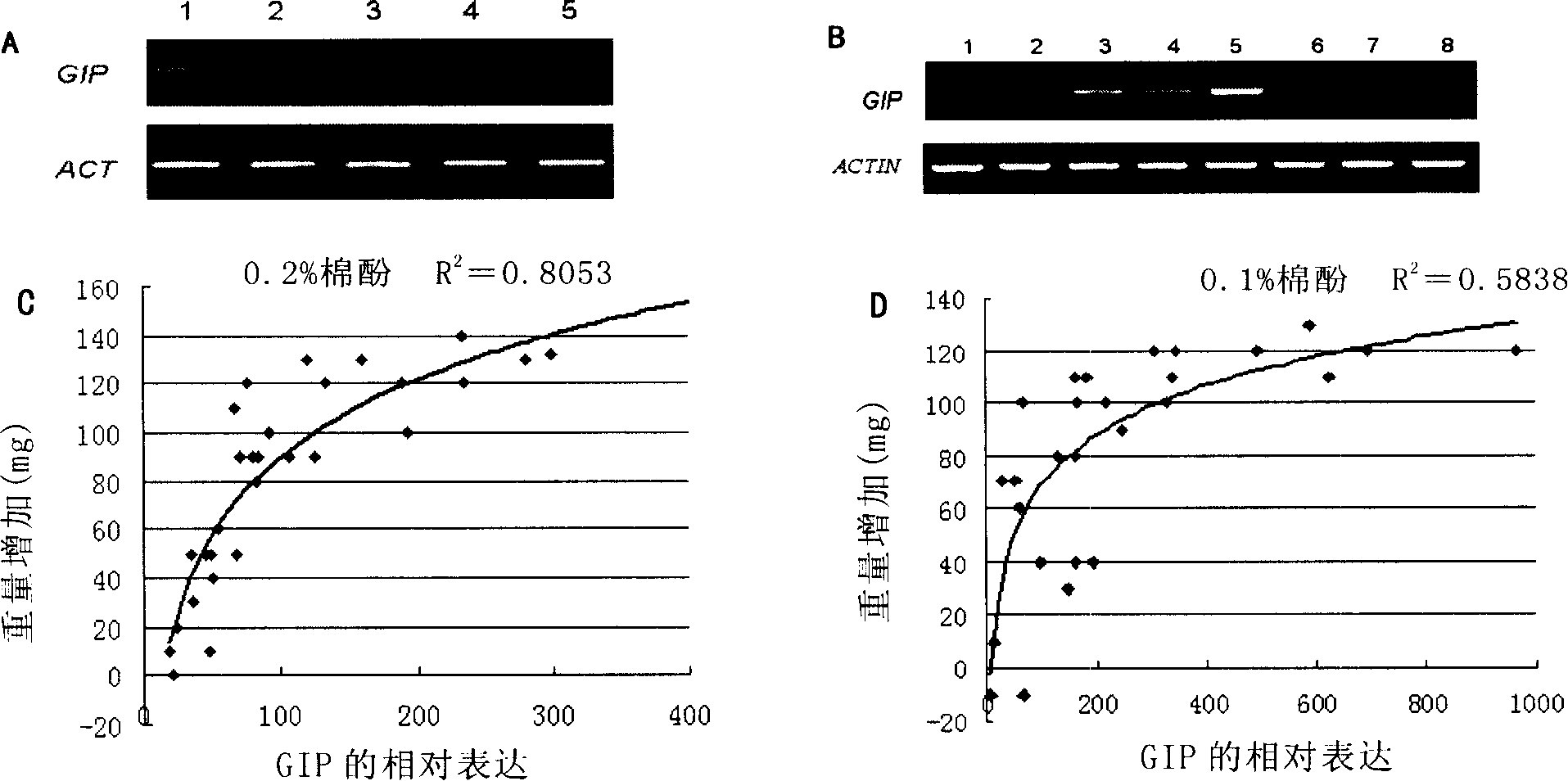Method for improving insect resistance of plant by using RNAi technique
一种抗虫性、植物的技术,应用在生物技术和植物学领域,能够解决死灰复燃、转基因抗虫植物抗性下降等问题
- Summary
- Abstract
- Description
- Claims
- Application Information
AI Technical Summary
Problems solved by technology
Method used
Image
Examples
Embodiment 1
[0112] The expression characteristics of embodiment 1 GIP gene
[0113] 1. Expression of GIP gene in cotton bollworm
[0114] In order to detect the expression of GIP gene in cotton bollworm, the inventors used RT-PCR method to detect the expression of GIP in different tissues. The method is as follows: the mRNA is extracted from the midgut, fat body, Malpighian duct, genitalia, and brain tissue of the cotton bollworm respectively, the GIP gene is amplified by the conventional RT-PCR method, and the obtained amplification product is detected by agarose electrophoresis. Among them, the primers used in RT-PCR are shown in Table 1.
[0115] Table 1
[0116] GIP+
5'-GTGCTTTGATGAGACTCTTCG-3'
SEQ ID NO: 5
GIP-
5'-TACATTTGCTATTTATAATTTGC-3'
SEQ ID NO: 6
[0117] The results of electrophoresis of RT-PCR products are shown in image 3 a. In the figure, 1-5 successively represent the expression of GIP gene in the midgut, fat body, Malpighian d...
Embodiment 2
[0124] Embodiment 2 Isolation of GIP gene
[0125] 1 μl Asian cotton bollworm (Helicovepa armigera) (about 10 6 pfu) After gradient dilution of the cDNA library (ZAPexpress), use the following specific primers for PCR to determine the minimum working concentration for PCR:
[0126] GIP2+: 5'-GAAGATTTTCTCGATAAGGAAG-3' (SEQ ID NO: 7);
[0127] GIP2-: 5'-ATATAAAGCACTGTGCCACTAAG-3' (SEQ ID NO: 8).
[0128] Soak the 96-well plate in 70% ethanol for several hours, shake it dry, and irradiate it with ultraviolet light for 15-30 minutes, then add 200-300μl LB (containing 10mM MgSO 4 / 0.2% maltose). Take an appropriate dilution of the library (1000-fold dilution) solution and mix it with 400 μl XL1-Blue bacteria solution, shake and incubate at 37°C for about 30 minutes, and add 4 μl of the mixture to each well. Plates were incubated overnight at 37°C. After amplification, 5 μl of bacterial solution was taken from each column of 8 wells and mixed evenly, and a total of 12 columns w...
Embodiment 3
[0130] Example 3 For the construction of dsGIP, the isolation of dsGST1 gene
[0131] Using the Asian cotton bollworm (Helicovepa armigera) cDNA library (ZAP express) as a template, use gene-specific primer pairs:
[0132] Primer pairs used to obtain GIP gene fragments:
[0133] GIPF: 5'-GAAGATTTTCTCGATAAGGAAG-3' (SEQ ID NO: 7), and
[0134] GIPR: 5'-ATATAAAGCACTGTGCCACTAAG-3' (SEQ ID NO: 8); and
[0135] Primer pairs used to obtain fragments of the GST1 gene (GenBank accession number EF033109):
[0136] GSTF: 5'-GACCTTGGCAGACCTCAG-3' (SEQ ID NO: 9), and
[0137] GSTR: 5'-CCAGCTCGAACCACTTTT-3' (SEQ ID NO: 10);
[0138] Perform PCR amplification to obtain GIP and GST1 fragments for constructing dsGIP and dsGST1 expression vectors, respectively.
PUM
 Login to View More
Login to View More Abstract
Description
Claims
Application Information
 Login to View More
Login to View More - R&D
- Intellectual Property
- Life Sciences
- Materials
- Tech Scout
- Unparalleled Data Quality
- Higher Quality Content
- 60% Fewer Hallucinations
Browse by: Latest US Patents, China's latest patents, Technical Efficacy Thesaurus, Application Domain, Technology Topic, Popular Technical Reports.
© 2025 PatSnap. All rights reserved.Legal|Privacy policy|Modern Slavery Act Transparency Statement|Sitemap|About US| Contact US: help@patsnap.com



